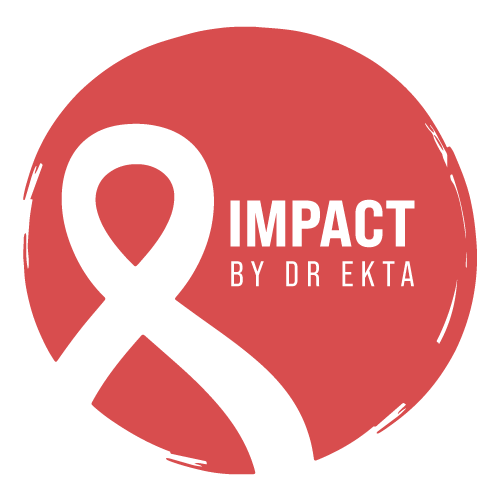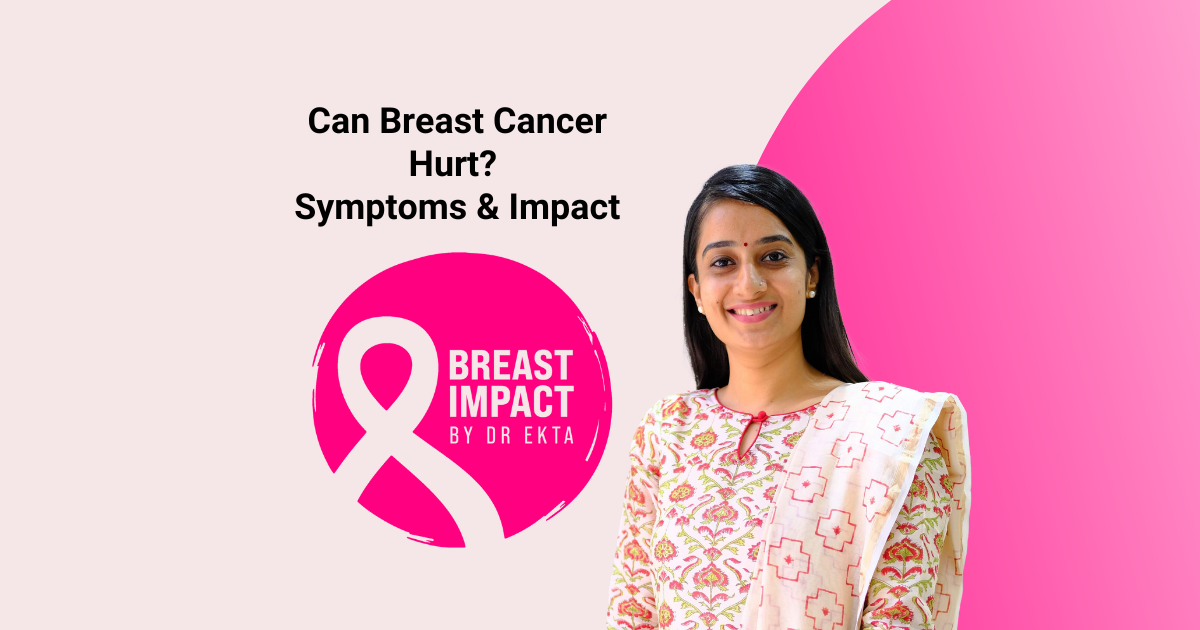When most people think of breast cancer, they often associate it with a lump or changes in breast appearance. But one question that patients frequently ask is: Can breast cancer hurt? While pain is not the most common symptom, it can be a part of the experience for some. Understanding the relationship between breast cancer and pain helps individuals recognize warning signs early and seek medical advice promptly. This blog explores the symptoms, types of pain associated with breast cancer, the physical and emotional impact of the disease, and what to do if you notice discomfort.
Key Takeaways:
- Breast cancer can cause pain, but it’s not always a primary symptom
- Understanding the type and timing of breast pain can help identify potential risks
- Other signs like nipple discharge, skin changes, and swelling may accompany pain
- Early evaluation by a healthcare provider is key to timely diagnosis and treatment
- Treatment side effects, emotional stress, and inflammation can also contribute to discomfort
Can Breast Cancer Cause Pain?
The idea that cancer is painless has been challenged over the years. While most breast cancers do not cause discomfort in the early stages, pain can be present in certain cases. Here’s how:
- Inflammatory breast cancer and advanced-stage cancers are more likely to be painful
- Pain may occur when tumors press on nearby tissues or nerves
- Hormonal fluctuations or benign conditions can also cause breast pain, making it harder to distinguish from cancer
- Pain might be localized (sharp or stabbing in one area) or general (a dull ache across the breast)
If you’re experiencing breast pain that doesn’t go away with your menstrual cycle or over-the-counter treatment, it’s best to get it evaluated. This doesn’t mean you have cancer, but it’s important to rule it out.
Learn about early warning signs of cancers
Common Symptoms of Breast Cancer
Besides pain, breast cancer may present with other symptoms that are easier to identify. Here’s what to look out for:
- A new lump in the breast or underarm
- Swelling of all or part of the breast
- Skin irritation or dimpling (resembling an orange peel)
- Nipple discharge, other than breast milk, possibly bloody
- Redness or flaky skin in the nipple area
- Pulling in of the nipple or pain in the nipple area
- Any change in the size or shape of the breast
Some types, such as inflammatory breast cancer, can be more aggressive and cause visible changes in skin texture and color along with pain.
When Is Breast Pain Concerning?
Not all breast pain is a sign of cancer. In fact, most breast pain is benign and related to hormonal changes. However, you should consult a doctor if:
- The pain is persistent or worsening over time
- It’s localized in one spot and feels different from typical hormonal discomfort
- It’s accompanied by other changes like a lump, nipple discharge, or skin changes
- You’re over 40 and haven’t had a recent mammogram
Being proactive can ensure early detection and effective treatment, even if the cause is not cancer.
How Is Pain From Breast Cancer Diagnosed?
To find the cause of breast pain, especially if cancer is suspected, doctors use several tools. These include:
- Clinical breast examination to check for lumps or abnormalities
- Mammography, the gold standard for breast cancer screening
- Ultrasound, especially helpful for younger women or dense breast tissue
- MRI scans for more detailed imaging in complex cases
- Biopsy if a suspicious mass is found, to confirm or rule out cancer
These steps help distinguish breast cancer pain from discomfort caused by benign conditions like fibrocystic changes or infections.
Pain During Breast Cancer Treatment
For those already diagnosed, treatment itself can lead to various types of discomfort. Here’s how:
- Surgery (lumpectomy or mastectomy) can lead to temporary or long-term nerve pain
- Chemotherapy may cause body aches, nerve pain (neuropathy), or mouth sores
- Radiation therapy might result in skin irritation, burning, or internal soreness
- Hormonal therapies can trigger joint and muscle pain due to changes in estrogen levels
Managing these side effects is a key part of the treatment journey. Pain doesn’t always mean cancer is progressing; it might be part of the body’s healing or response process.
Emotional Impact and Pain Perception
Living with breast cancer can lead to emotional stress, which can heighten the perception of pain. Anxiety, depression, and fear are common during and after treatment. This can:
- Make minor physical symptoms feel more intense
- Lower pain tolerance
- Disrupt sleep and amplify fatigue, contributing to overall discomfort
Coping strategies that include psychological support, mindfulness techniques, and professional counseling can help ease the emotional burden and improve pain management.
Explore mental wellness strategies for cancer patients
Secondary Symptoms and Related Discomfort
Aside from breast pain, patients may experience discomfort in other areas due to cancer spread or treatment effects. These include:
- Arm swelling or lymphedema after surgery or radiation
- Back or chest pain if cancer spreads to bones
- Fatigue and joint pain related to long-term hormonal therapies
- Tingling or numbness from chemotherapy-induced nerve damage
Understanding the source of these symptoms is essential for improving quality of life during and after treatment.
FAQs: Can Breast Cancer Hurt?
Q: Is pain a common sign of breast cancer?
A: Not always. Many breast cancers, especially in early stages, are painless. However, pain can occur in aggressive or advanced types and should not be ignored.
Q: What does breast cancer pain feel like?
A: It can vary. Some women report a burning, stabbing, or aching sensation. Pain may be constant or intermittent and can be localized or spread across the chest.
Q: Can breast pain be caused by treatment?
A: Yes. Surgery, radiation, and certain medications used in breast cancer treatment can lead to various types of pain, including nerve pain, muscle aches, or tenderness.
Q: Should I worry if I have breast pain but no lump?
A: Not necessarily. Pain without other symptoms is often benign. Still, if it persists for more than a few weeks or worsens, it’s a good idea to consult a doctor.
Q: How can I manage pain during breast cancer treatment?
A: Depending on the cause, pain can be managed through medications, physical therapy, acupuncture, relaxation techniques, or nerve blocks under medical guidance.
Final Thoughts
So, can breast cancer hurt? Yes, it can, but it often doesn’t in the early stages. That’s why regular screenings and self-awareness are critical. Pain is only one possible symptom of breast cancer, and it can stem from many other non-cancerous causes. Whether you’re experiencing discomfort or have other symptoms, it’s always wise to discuss your concerns with a healthcare provider. The earlier breast cancer is detected, the better the chances of successful treatment and recovery. Don’t ignore your body it’s speaking to you.

